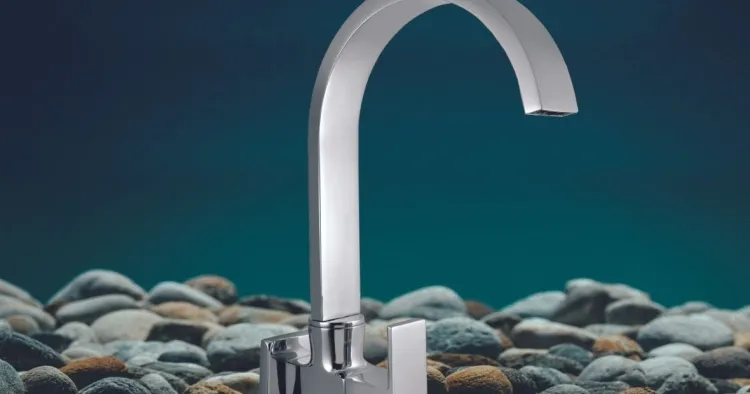Understanding Taps: Essential Fixtures for Modern Living...!!!
Taps are essential fixtures that play a vital role in our daily lives. With their diverse types, materials, and designs, they cater to various needs and preferences, ensuring convenience, efficiency, and aesthetic appeal.

Taps, or faucets, are crucial fixtures in homes, offices, and various other settings, providing a convenient means to control water flow for drinking, washing, cooking, and cleaning. Over time, the design, functionality, and technology of taps have evolved significantly, driven by advancements in engineering, materials, and aesthetic trends.
History of Taps
The use of taps dates back to ancient civilizations. The Romans, renowned for their sophisticated plumbing systems, utilized taps made from bronze and other metals. These early taps were simple in design, operated by turning a lever to control water flow. In medieval Europe, taps were mainly crafted from wood and used in conjunction with barrels for storing and dispensing water.
The modern era of taps began in the 19th century with the introduction of indoor plumbing. In 1845, the first patented tap with a screw-down mechanism was created, allowing for more precise control of water flow. By the early 20th century, taps with separate controls for hot and cold water became common, leading to the invention of mixer taps, which blend hot and cold water into a single stream.
Types of Taps
Taps come in various types, each designed to meet specific needs and preferences:
-
Single-Handle Taps: Featuring a single lever that controls both water flow and temperature, these taps are easy to use and offer a sleek, modern look.
-
Double-Handle Taps: With separate handles for hot and cold water, these taps allow for precise temperature control and are often found in traditional or classic-style bathrooms and kitchens.
-
Mixer Taps: Combining hot and cold water into a single stream, mixer taps allow users to adjust the temperature with one handle. They are popular in kitchens and bathrooms for their convenience and versatility.
-
Wall-Mounted Taps: Installed on the wall above the sink or basin, these taps provide a clean and uncluttered appearance, commonly used in modern and minimalist designs.
-
Deck-Mounted Taps: Mounted directly on the sink or countertop, these taps come in various styles and are widely used in residential and commercial settings.
-
Touchless Taps: Equipped with sensors, touchless taps automatically turn on and off when they detect motion. They are hygienic and water-efficient, making them ideal for public restrooms and high-traffic areas.
-
Pull-Out and Pull-Down Taps: Featuring a detachable spray head that can be pulled out or down for increased flexibility and reach, these taps are commonly used in kitchens for tasks such as rinsing dishes and washing produce.
Materials Used in Taps
Taps are made from various materials, each offering distinct advantages:
-
Brass: A durable and corrosion-resistant material, brass is commonly used in taps. Its classic and timeless appearance makes it suitable for both traditional and contemporary designs.
-
Stainless Steel: Known for its strength, durability, and resistance to corrosion, stainless steel taps have a sleek, modern look and are easy to clean and maintain.
-
Chrome: Chrome-plated taps have a shiny, reflective finish that adds elegance to any bathroom or kitchen. They are resistant to tarnishing and easy to clean.
-
Plastic: Lightweight and affordable, plastic taps are often used in temporary settings or as budget-friendly options for residential use.
-
Ceramic: Ceramic discs are frequently used in the internal mechanisms of taps to provide smooth and reliable operation, resisting wear and preventing leaks.

Installation and Maintenance
Proper installation and maintenance are essential for the longevity and functionality of taps. The installation process varies based on the type of tap and the plumbing system in place. It is crucial to ensure that the tap is securely mounted, connections are properly sealed, and there are no leaks.
Maintaining taps involves regular cleaning to prevent the buildup of limescale, mineral deposits, and soap scum. Using mild cleaning agents and non-abrasive tools helps preserve the finish and prevent damage. Periodic inspection of the tap's internal components, such as washers and cartridges, ensures smooth operation and prevents leaks.
Benefits of Taps
Taps offer numerous benefits in our daily lives:
-
Convenience: Taps provide easy access to water for various tasks, such as drinking, washing, cooking, and cleaning.
-
Water Efficiency: Modern taps are designed to be water-efficient, reducing water consumption and promoting environmental sustainability.
-
Hygiene: Touchless taps and taps with built-in water filters enhance hygiene by reducing contact with surfaces and providing clean, filtered water.
-
Aesthetic Appeal: Available in various styles, finishes, and designs, taps allow users to choose options that complement their décor and enhance the overall look of their space.
-
Versatility: With various types and features, taps can be tailored to meet specific needs and preferences, providing flexibility and functionality.
In summary, taps are essential fixtures that play a vital role in our daily lives. With their diverse types, materials, and designs, they cater to various needs and preferences, ensuring convenience, efficiency, and aesthetic appeal. Proper installation and maintenance ensure the longevity and performance of taps, making them indispensable elements in homes, offices, and public spaces. As we continue to prioritize hygiene and sustainability, the importance of taps in our daily routines remains ever relevant.
What's Your Reaction?

















